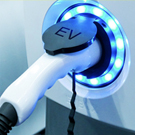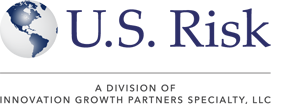Insights
 Liability Trends in the Parking Industry
Liability Trends in the Parking Industry
August 15, 2024
The landscape of liabilities in parking lot operations and valet services is evolving, driven by advancements in technology, shifting regulatory frameworks, and changing customer expectations. Operators in this industry must navigate a complex array of risks, from cybersecurity concerns to environmental regulations, while also addressing the perennial challenges associated with employee conduct and customer safety.
Understanding these emerging trends is crucial for developing effective strategies to mitigate potential liabilities and ensure the smooth operation of parking and valet services.
Top 5 Emerging Liabilities in the Parking Sector
Emerging trends in liabilities for parking lot operations and valet services include several key areas, reflecting changes in technology, legal standards, and customer expectations. Here are some notable trends:
Increased Use of Technology
- Automated Parking Systems: As more parking lots adopt automated systems, liability for malfunctions, system errors, or accidents involving these technologies is increasing.
- Surveillance and Data Privacy: Enhanced surveillance systems can help mitigate theft and damage claims, but they also raise concerns about data privacy and misuse of recorded footage.
Cybersecurity Risks
- Data Breaches: Valet services often collect personal and payment information. Breaches can lead to significant liabilities, including regulatory fines and reputational damage.
- Connected Vehicles: As cars become more connected, valet services handling these vehicles must consider the potential for hacking and unauthorized access.
Environmental Liability
- Electric Vehicle (EV) Charging Stations: The increase in EVs requires parking lots to provide charging stations, leading to potential liabilities related to station maintenance, electrical safety, and proper usage.
- Environmental Regulations: Compliance with new environmental regulations, such as those related to stormwater runoff and emissions from idling vehicles, is becoming a critical concern.
Employment Practices Liability
- Gig Economy Workers: With some valet services employing gig workers, issues around worker classification, wage disputes, and benefits are creating new liabilities.
- Employee Conduct: Misconduct or negligence by employees, especially in the context of handling expensive vehicles, can lead to significant claims.
Third-Party Liability
- Customer Interactions: Incidents involving customers, such as slip-and-fall accidents in parking lots, remain a persistent liability.
- Shared Spaces: Parking lots that serve multiple businesses or residences must navigate complex liability issues involving multiple stakeholders.
There are numerous other liabilities, including common risks associated with vehicle theft, property damage, and employee carelessness. Still, the five liabilities above must be considered fully and prepared for with appropriate risk management/risk mitigation processes.
Mitigating Risks in the Parking Lot and Valet Industries
To effectively manage and mitigate the various risks associated with parking lot operations and valet services, it is essential to implement comprehensive risk management practices. These practices address a wide range of potential liabilities, from the technological challenges posed by automated parking systems to the environmental responsibilities of operating electric vehicle charging stations. Here is a brief look at some of the most effective risk management practices for the parking sector:
Automated Parking Systems
- Regular Maintenance and Updates: Conduct routine checks and maintenance to ensure the automated systems are functioning correctly and update software regularly to fix bugs and enhance security.
- Thorough Staff Training: Provide comprehensive training for employees on how to operate and troubleshoot the automated systems to prevent and quickly resolve any issues that may arise.
Surveillance and Data Privacy
- Secure Storage for Surveillance Footage: Store surveillance footage in secure, encrypted systems to prevent unauthorized access and ensure that data retention policies comply with legal requirements.
- Compliance with Data Privacy Regulations: Stay informed about data privacy laws and regulations, implement measures to protect customer data, and respond appropriately to data breaches.
- Strong Data Encryption and Secure Payment Systems: Use advanced encryption methods to protect customer data and ensure that all payment transactions are secure to prevent data breaches.
- Regular Cybersecurity Audits: Perform regular audits and vulnerability assessments to identify and address potential security threats to your systems.
Electric Vehicle (EV) Charging Stations
- Routine Inspections and Maintenance: Conduct regular inspections and maintenance of EV charging stations to ensure they are safe and operational, reducing the risk of electrical hazards.
- Clear Usage Instructions for Customers: Provide clear, visible instructions for using the charging stations to prevent misuse and ensure customer safety.
Environmental Regulations
- Implement Stormwater Management Systems: Install systems to manage stormwater runoff effectively, preventing pollution and complying with environmental regulations.
- Monitor and Reduce Vehicle Emissions: Implement measures to monitor and reduce emissions from idling vehicles, such as signage to encourage drivers to turn off engines while parked.
Employment Practices Liability
- Proper Classification of Workers: Ensure that workers are correctly classified as employees or contractors to avoid legal issues related to wages and benefits.
- Regular Training on Handling Vehicles and Customer Service: Provide ongoing training for employees on best practices for handling vehicles and interacting with customers to minimize the risk of accidents and disputes.
Customer Safety
- Well-Lit and Clearly Marked Pathways: Ensure that parking areas are well-lit and pathways are clearly marked to prevent accidents and enhance customer safety.
- Regular Inspections to Prevent Slip and Fall Hazards: Conduct frequent inspections to identify and address potential hazards, such as uneven surfaces or spills, to reduce the risk of slip and fall accidents.
These risk management practices are designed to supplement the protections afforded by comprehensive parking liability insurance. It is critical to speak to an experienced insurance underwriter to ensure that current and unexpected risks are covered, helping parking lot operators and valet service providers reduce their exposure to risks and ensure a safer, more reliable service for their customers. ◼

